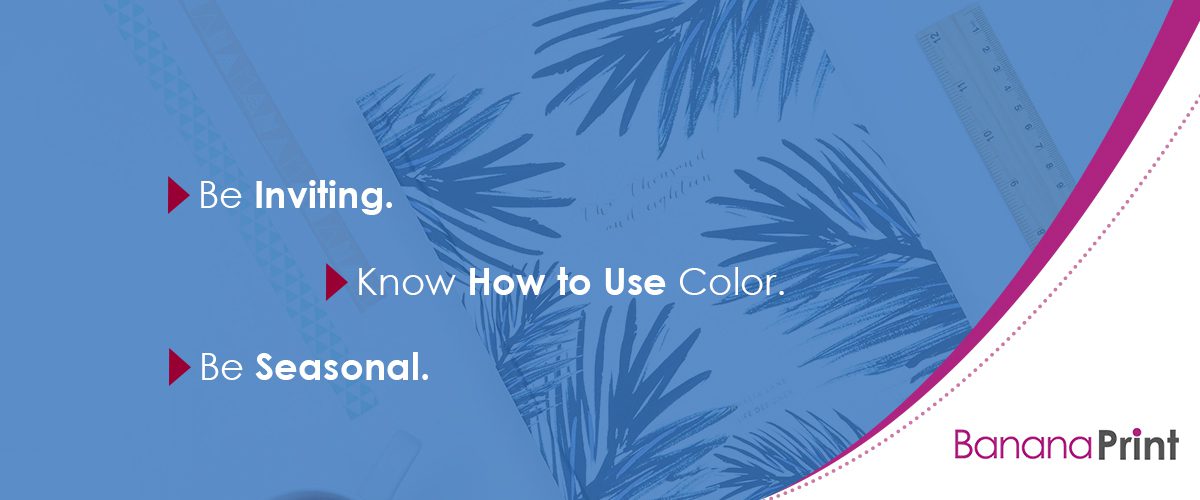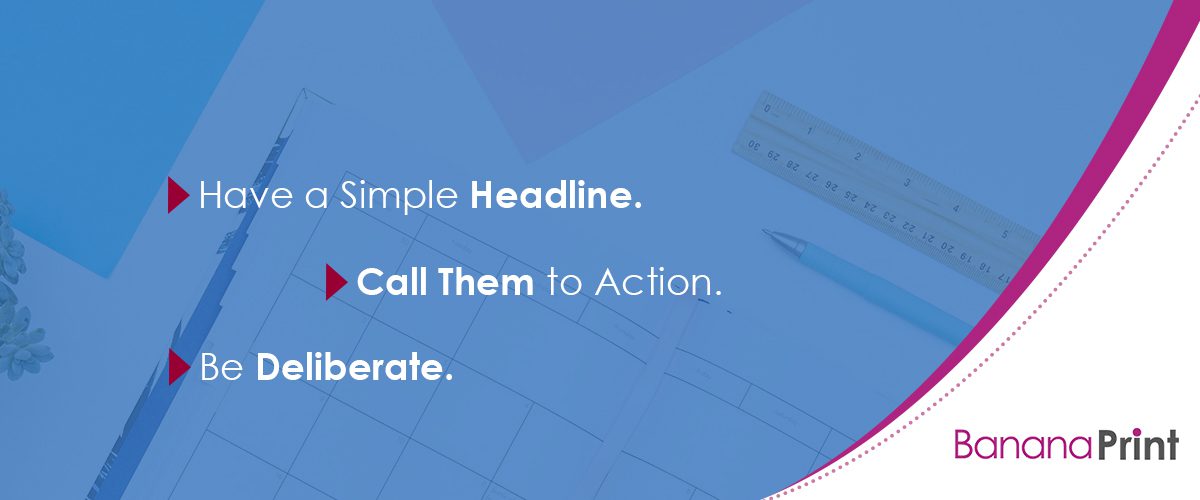The Most Important Things to Know to Design a Winning Flyer
Most likely, you want a flyer design because you have a product to share with people, or a fantastic party or event, or a project or lecture series at your business, and you want people to come.
You could just print out some basic information on a piece of white computer paper and be done with it. But would people notice it? Even if they did, would it be compelling or interesting, or would they just ignore it?
You need help, and this article can provide it! Graphic designers and other industry experts have host of tips on how to create a strong, attractive, communicative flyer that gets the point across in a winsome, eye-catching way. Here are some of the most important tips you’ll need to create an amazing flyer, regardless of what it’s for.

Keep Your Design Focused & Easy to Scan
Your flyer, like all marketing materials, needs to be readable first and foremost. Your audience must be able to quickly see and understand your message, whether you’re designing an event flyer, sale flyer, or other promotional flyer.
It’s very important to use a minimalist layout when designing your flyer. Avoid a flyer size and don’t size that are too small, as this can make the flyer hard to read from a distance. Similarly, avoid using too much copy or too many images, as this may overwhelm the reader. If you stick with these design tips, the design process will be much easier.
Use Bullet Points Effectively
Most amateur designers tend to overuse bullet points because they don’t have another mental category for organizing and communicating information.
This is where being concise and creative comes in. What are the most important features of your event (performers, games, prizes, workshops, etc.)? These are the kinds of things that should be bulleted, and only about four or five as a way to pique interest.
Sparing use of bullet points is essential.
Highlight Your Contact Information
Even the most beautiful flyer in the world is useless if no one can contact the designer. Your flyer is meant to attract people to you and your business, and therefore it is essential to put your contact information somewhere on the page.
Make sure to include your name, email address, phone number, and any other pertinent contact info on your flyer. Choose a font size that’s slightly smaller than your main copy (you don’t want to distract from your primary message) but make sure it’s legible and easy to find. This will allow interested folks to easily find out how to get in touch with your business.
Design for Visual Balance
Any time you design marketing materials, you need to look for a sense of balance on the finished page. Your flyer should not be too text heavy, nor should it have too many images. If you’re not a seasoned flyer maker, finding this balance can be tough on your own. But thankfully, these days businesses don’t need much design skill to create something great.
You can use design tools like Adobe Photoshop to make beautiful and balanced flyers, whether you need an A4 flyer or something on leaflet paper and size. Softwares like these come equipped with flyer templates, ready for you to drag and drop on your custom text and images.
Having the right leaflet paper and sizing is an often overlooked aspect of this as well; you want an overall consistent, clean appearance to attract the viewer.

Have a Simple Headline
Be quick, clear, and to the point. This could be the name of your event, or perhaps a reason why the viewer might be interested in coming (this would be something your event is offering as an incentive, a perceived need to meet in the viewer).
There are all kinds of ways you can draw attention to this with fonts, colors, and designs, but the main thing is it should be easy to see and to the point.
Call Them to Action
You don’t want the viewer to simply see the flyer and do nothing. You want to communicate in a compelling way that convinces them to try out your event, service, or product.
There are many ways to do this. You could point them to a website that offers them more information and a chance to sign up for the event. You could whet their appetite with things that are offered at the event (free food usually works). You could give them a hashtag to use in a tweet or on Facebook related to something the event is about.
The point is you want them to be thinking about and interacting with your ideas and offerings even before they come to the actual thing offered, and to do so in such a way that it makes them want to try you out.
Be Deliberate
This ties in with the balance idea, but is distinct enough to be its own point. Good balance involves alignment—either left, right, or center. You can use just one, or all three, but they must be intentional and thoughtful. They cannot simply be used to maintain an arbitrary pattern (after all, that could result in key information being separated or in unhelpful spots).
Any deviation from the main alignment should be planned and purposeful. You want it to be there for a reason—to draw attention, to set off that content from the rest, to be eye-catching and meaningful. Good, thoughtful interaction with your ideas and the information you want to convey will be helpful in determining where alignment should be and how to adjust it to be the most effective.
Be Inviting
Using images of a happy person is a great way to be inviting to viewers. It communicates the idea that they’ll be happy too if they try out your product or service or come to your event.
There are other ways to be inviting. Using a flowing, script-like font can communicate kindness and warmth. Warm colors like golds, reds, and pinks can do this too.
Know How to Use Color
Effective flyers will always use color. And there are lots of ways to use color effectively…and even more ways to use it in ways that hurt your flyer.
Good use of color recognizes the palette you use will be a strong mental and visual draw to the viewer. It will also communicate the mood and tone of your advertisement more than possibly anything else.
That means the use of color is deeply important. Citrusy colors like bright oranges and yellows give off the ideas of happiness, lightness, and fun, while cool blues and greys look more professional, technological, and corporate.
Many designers will tell you a foolproof way to incorporate color is to use black-and-white photography and a block trio of complementary colors to highlight important text. (You can learn more about which colors complement each other here.)
Good, careful selection of color will attract the right viewers and bring people to you who are intrigued about what you have to offer and believe in it enough to stop by.
Example: Schlaf.Guru
Be Seasonal
Seasonal doesn’t always work. If your event has nothing to do with the season or with any major holidays that are coming up, incorporating seasonal themes or colors will just look hokey and immature. But if your event or product is inspired by, ties in with, or complements a major holiday or seasonal change, then, by all means, incorporate away!
The most obvious example of this is events around the Christmas holiday. Wintertime activities—cooking or craft classes, lecture series, concerts, mixers, etc.—can all have a touch of holly, snowy trees, snowmen, wrapped presents, and the like.
Summer barbecues, picnics, and games can have sunshine, sandcastles, and popsicles. Fall events should make use of leaves, apple cider, sweaters, and maple syrup. And who can forget tulips, Easter eggs, lilies, and rolling green hills in the peak of spring?
Creative use of seasonal imagery can create an immediate sense of nostalgia and connection in the viewer, which will make them want the actual thing offered.
Conclusion
You don’t have to have an MFA in graphic design to create a good flyer! It’s mostly about thoughtful, careful planning that decides the heart of what you want to say, then finding ways to say it compellingly, attractively, and effectively. Of course, having the right printer — one happy to answer all of your questions and dedicated to creating the best possible product — helps too.
Knowing a few basic ideas about color, placement, and organization can go a long way to creating beautiful, inviting flyers that will draw people to you and translate to sales, influence, respect, and longevity. Happy designing!
